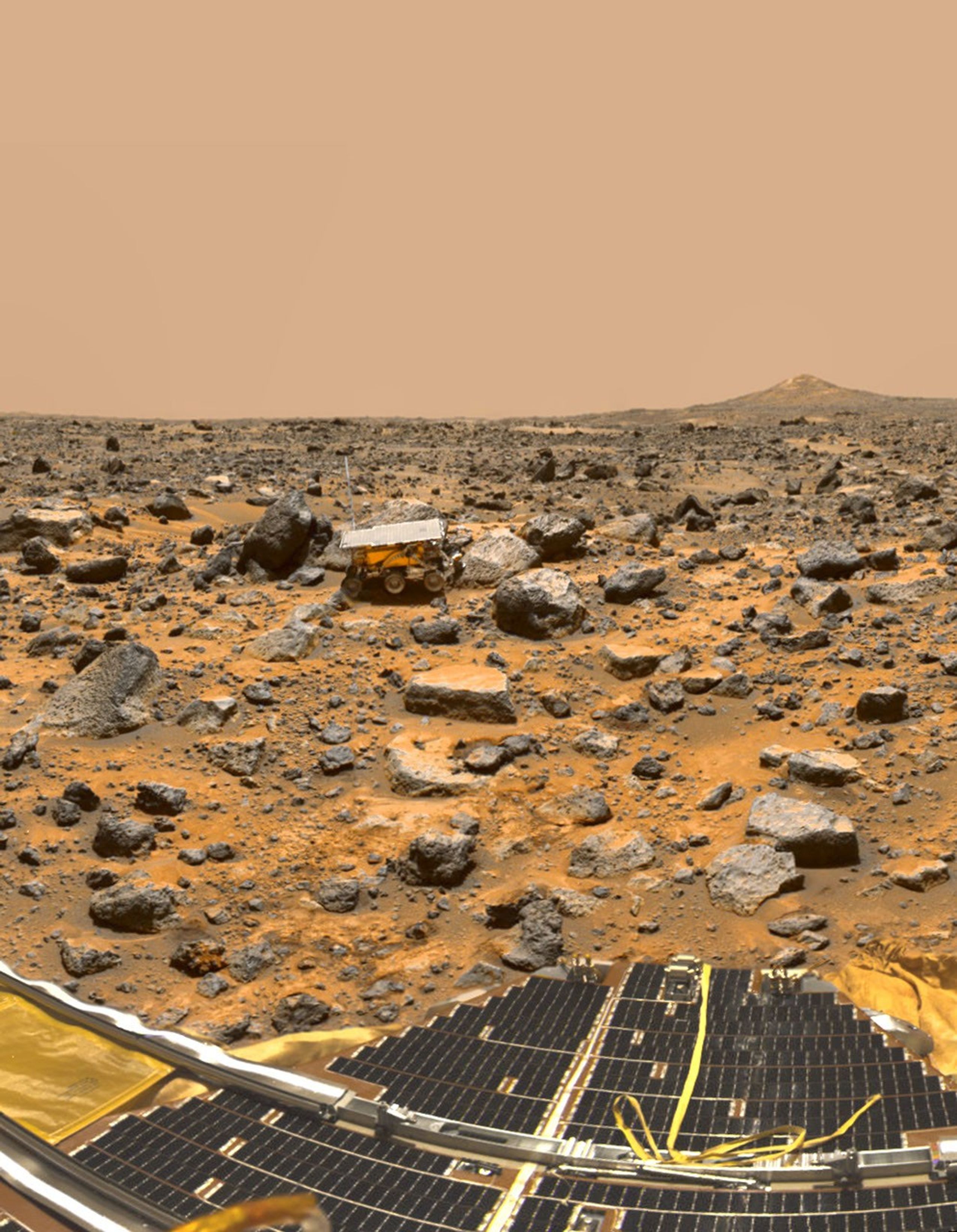Pathfinder on Mars
| Credit | NASA/JPL |
|---|---|
| PIA Number | PIA01120 |
| Language |
|
Based on the first direct measurements ever obtained of Martian rocks and terrain, scientists on NASA's Mars Pathfinder mission report in this week's Science magazine that the red planet may have once been much more like Earth, with liquid water streaming through channels and nourishing a much thicker atmosphere.
Among the more significant discoveries of the Mars Pathfinder mission was the identification of possible conglomerate rocks, which suggests the presence of running water to smooth and round the pebbles and cobbles, and deposit them in a sand or clay matrix, says Dr. Matthew Golombek, Mars Pathfinder project scientist at NASA's Jet Propulsion Laboratory, Pasadena, CA. This scenario supports the theory that Mars was once warmer and wetter.
"If you consider all of the evidence we have at Ares Vallis -- the rounded pebbles and cobbles and the possible conglomerate, the abundant sand and dust-sized particles and models for their origins, in addition to the high silica rocks," Golombek says, "it suggests a water-rich planet that may have been more Earth-like than previously recognized, with a warmer and wetter past in which liquid water was stable and the atmosphere was thicker."
A panoramic view of Pathfinder's Ares Vallis landing site, featured on the cover of the Dec. 5 issue of Science, reveals traces of this warmer, wetter past, showing a floodplain covered with a variety of rock types, boulders, rounded and semi-rounded cobbles and pebbles. These rocks and pebbles are thought to have been swept down and deposited by floods which occurred early in Mars' evolution in the Ares and Tiu regions near the Pathfinder landing site.

























